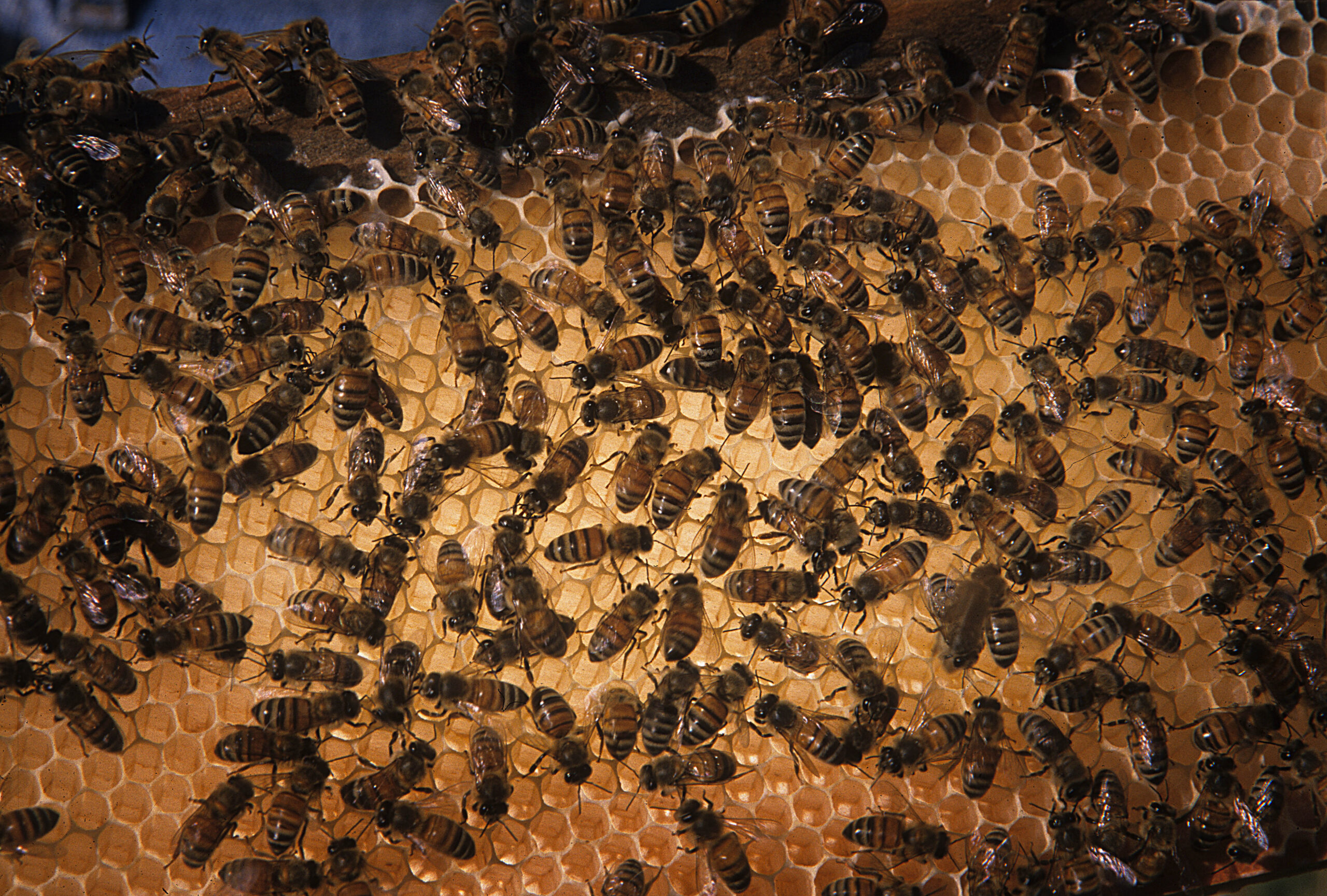Potential impacts on IR-4’s work and the beekeeping industry

While IR-4 is best known for its pest management work on food and environmental horticulture crops, our efforts gaining product registrations for honey bee health have been vital to beekeepers, and to countless specialty crop growers who rely on honey bee pollination. In particular, the IR-4 Project has played a major role in making Varroa mite treatments available to beekeepers. IR-4 has been involved in 9 out of 10 active ingredients available to beekeepers for Varroa mite control (see Appendix), and is currently aiding another registration. The assistance IR-4 provides to the beekeeping industry also includes supporting Section 18 approvals for emergency use, conducting magnitude of the residue studies on honey and beeswax, and submitting registration and tolerance packages to EPA. Additionally, IR-4 has extensive experience funding honey bee-related efficacy studies and pollinator protection.
Potential oversight changes on the table
The protection of honey bee colonies is of vital importance to IR-4, to the beekeeping industry, and to the specialty crop growers we serve. Moving forward, IR-4’s ability to serve the honey bee industry may be hampered by a proposed change in the oversight of certain products, like those that keep Varroa mites in check. The U.S. Environmental Protection Agency (EPA) and U.S. Food and Drug Administration (FDA) are considering how best to modernize their respective oversight responsibilities, with the goal of improving protection of human, animal, and environmental health. They seek input from stakeholders to better understand potential outcomes of changes to current jurisdictions.
EPA Office of Chemical Safety and Pollution Prevention hosted a virtual public meeting with FDA Center for Veterinary Medicine (CVM) on March 22, which was attended by IR-4 team members. EPA’s public comment period is now open, inviting feedback from stakeholders. The agencies also shared a new whitepaper entitled, “A Modern Approach to EPA and FDA Product Oversight.” Read more about the meeting and proposed changes on Bee Culture.
A move of Varroa mite control products from EPA to FDA jurisdiction would prevent IR-4 from continuing to serve beekeepers and protect honey bee colonies. IR-4’s regulatory work is highly specialized in partnership with EPA. IR-4 experts emphasize that there are no equivalent public agencies that could provide IR-4’s level of expertise in facilitating registrations with FDA. Without IR-4, the registrations of newer, safer pest management products available to beekeepers would diminish.
IR-4’s view on jurisdictional change, the role of each agency
In terms of expertise, IR-4 sees EPA as a more logical fit for Varroa mite oversight than FDA. EPA has the history and a well-established system for regulating topical pesticides applied to animals, particularly those that do not impact human health and infectious diseases.
FDA is better able to regulate pesticide products that are ingested, systemic, or do impact human health, such as topical tick products and certain antibiotics administered to animals when there is concern with resistance to human antibiotics (e.g. terramycin and honey bees). In general, FDA has expertise when evaluating pesticides applied, administered, or fed to vertebrate animals. When it comes to considering the regulation of topical pesticides applied to invertebrates like honey bees, FDA is lacking in experience compared to EPA.
EPA has long-standing honey bee ecotoxicology guideline requirements, evaluation procedures and models, and incidence-reporting schemes. Pesticides applied to invertebrates to control another invertebrate in particular are best regulated by EPA (e.g. honey bees and Varroa mite), which has proven evaluation guidelines for safety on beneficial organisms, and is best able to evaluate efficacy data with insects.
EPA also has lower registration fees and timelines compared to FDA. Regulation by FDA may be more challenging for manufactures and more cost prohibitive, particularly for those producers in niche industries (e.g. honey bee pesticides). Large companies producing topical products for ticks and fleas, in contrast, are able to expend the resources for the lengthy FDA registration process, knowing the consumer market is large enough for them to recoup those costs.
IR-4 contends that control products for insect pests that attack honey bees should remain within EPA jurisdiction. The current regulatory approach is clear and appropriate: anything topical and non-systemic goes through EPA, while anything systemic (within the animal being fed) goes through FDA. With maintained EPA jurisdiction, IR-4 can continue to facilitate pathways to new products for the battle against resistance-prone Varroa mites (and other destructive pests), supporting beekeepers nationwide.
Would you like to weigh in on the issue? IR-4 encourages stakeholders to submit feedback during the comment period, which is now open. To share your written comments with EPA, visit the docket* and enter your feedback via the comment form. Public comments will be accepted through 11:59 p.m. ET on April 24, 2023.
*You can also navigate to the docket by visiting Regulations.gov, and entering the docket number: EPA-HQ-OPP-2023-0103 (sometimes the direct link above is slow to load).
APPENDIX: IR-4’s Role in Varroa Mite Active Ingredient Registrations
| Active Ingredient | IR-4 Role in Varroa Mite Active Ingredient Registration |
| Sucrose Octanoate | Submitted registration package and tolerance exemption |
| Thymol | Supported Section 18, Conducted residue studies in honey and beeswax, Submitted registration package and tolerance exemption |
| Oil of Eucalyptus | Supported Section 18, Conducted residue studies in honey and beeswax, Submitted registration package and tolerance exemption |
| Menthol | Supported Section 18, Conducted residue studies in honey and beeswax, Submitted registration package and tolerance exemption |
| Oxalic acid | Submitted registration package and tolerance exemption |
| Hop beta acids | Submitted registration package and tolerance exemption |
| Coumaphos | Conducted residue studies in honey and beeswax, Submitted registration package and tolerance petition |
| Amitraz | Supported Section 18 |
| Formic acid | Submitted registration package and tolerance exemption |
| Fluvalinate | None |
